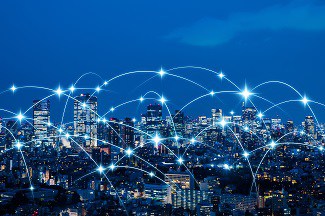5G: Not going the last mile in multifamily communities

Traveling from one major city to another, most of the journey is probably on the interstate, moving at high speeds. Reaching your destination—the last mile of the trip—is often more complex. It means exiting the super-highway and winding through a maze of side streets, traffic lights, and congestion.
For some multifamily property owners, “last mile” internet connectivity might seem just as complicated. It’s that final communications hand-off bridging an internet provider’s network and the residents of a multi-dwelling community. It’s important to note that the majority of fiber-enabled properties receive fiber all the way to the premises or living unit—making for a much smoother last mile. For some communities, though, there may be other technologies involved and different challenges. Recently, some of the last mile discussion has shifted toward what role 5G might play.
Wireless but not limitless
Like any wireless technology, 5G uses radio signals to send data and information back and forth through the air. And, just like any radio signal, 5G signals become weaker as they travel further away from their transmitter. In fact, the high-density characteristics of 5G waves cause them to dissipate quickly. What’s worse is that the signal breaks down even further when it hits solid walls, Low-E glass, building materials like concrete or steel, or even environmental landscapes like dense foliage.
For multifamily owners, it’s essential to remember just what 5G is—and what it is not. While advanced, 5G is still cellular phone technology. If a building has indoor coverage problems with earlier cellular systems (2G, 3G, 4G), 5G won’t perform differently.
Due to these types of interference issues, property owners won’t find outdoor, over-the-air 5G networks to be reliable solutions for providing service or connectivity inside their buildings. If a community doesn’t have a managed WiFi system inside its walls, residents may find staying connected while using their phones or smart devices difficult. As they roam from outdoor spaces back inside their apartments, they will likely run into signal drops. These lapses in coverage will be glaringly obvious (and frustrating) for anyone streaming content or making video calls as they move around. For the time being, it seems, WiFi will continue to be the primary indoor solution for transmitting data and voice.
Short hops
With 5G, shorter is better—shorter distances, that is. The rule of thumb is that 5G speed and signal strength are proportional to distance. The closer a device is to a 5G transmitter, the better it will perform.
Unlike 5G, a fiber internet network can deliver consistent speeds over a strong, reliable connection and, of course, span greater distances. That includes multifamily complexes and whole communities. The key for property owners is to know the advantages of different technologies available and determine which solutions work best. Knowing all the options can help developers and property owners decide on the most practical, cost-effective, worthwhile plan to keep their residents connected and make their community desirable to the tech-savvy.
Solutions vary by location
For multifamily owners, augmenting and optimizing internet connectivity for their residents should be solutioned by experts. Options and solutions can be as unique and varied as each building or community. For example, a high-rise complex in the heart of downtown faces an entirely different set of challenges than a community of townhomes out in the ‘burbs.
Figuring out a wireless strategy can also depend heavily on a property’s existing infrastructure. The availability of a pre-existing fiber network, like Quantum Fiber, wireless access points, radio networks, or nearby cell towers can all help determine the best way forward for developers and property owners.
The importance of layout
How a multifamily building is designed and structured can also significantly impact the ways property owners can best create a customized connectivity solution. It’s important to remember that a community’s construction, building materials, and layout can impede 5G wireless capabilities. Limitations like rapid signal degradation and poor wall penetration will become apparent very quickly. Since every building is unique, properties need a customized approach—such as fiber-to-the-premises combined with managed WiFi. For all its promise, 5G is still far from a one-size-fits-all fix for multifamily connectivity.
Fiber is the foundation
Despite the differences from community to community, the central nervous system of any connectivity plan for multifamily developments continues to be a robust, dependable fiber-optic network. The qualities of fiber and its capacity to accommodate new and changing technologies make it ideal for tackling residents’ (and owners’) growing and changing needs.
Today, fiber networks and bulk-managed broadband offer multifamily owners a technically superior and far less costly system that can satisfy the needs of tech-savvy residents. More importantly, fiber’s potential is largely untapped. As technologies evolve, fiber can adapt and expand its capabilities to accommodate whatever comes next—decade after decade.
Source: QuantumFiber.com















 Accessibility
Accessibility